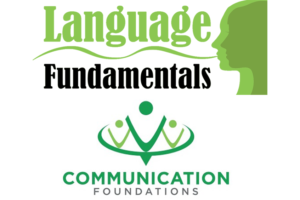
Are women’s soccer players more susceptible to having a traumatic brain injury?
Two subjects that are near and dear to my heart are soccer and speech language pathology, and they have intersected in my life in a major way. I started playing soccer from the tender age of 4, went on to play on a premiere travel league in middle school and high school, made the Olympic Development Program in high school, and then Division I soccer in college.
Never did I think soccer would crossover into my profession, but as the incidences of concussions or TBI’s increased in the female population for soccer, this peaked my interest to say the least. Some may be confused as to why there is such an increase in TBI’s with females who play soccer, because after all, isn’t soccer mainly played with your feet?
Yes, however, there is one aspect that’s played with your head. It’s called “heading”. I practiced heading the ball with my dad at home, during practice, and also on my own, determined to not be a “sissy” on the field. Little did I know how much heading the ball and head injuries would plague me and females in general who play soccer, especially if performed incorrectly.
A study performed by the Society for Neuroscience conference in Washington D.C., indicates that female soccer players may also sustain more brain damage from heading the ball compared to male players. According to another study done by the Albert Einstein College of Medicine in New York, found that after scanning almost 100 brains of male and female amateur soccer players, of which the researchers matched the images with each volunteer’s age and how many times they headed the ball in the last season, found that the female players showed damage in more regions of the brain’s white matter than with their male counterparts.
“While American football has been both scientifically and colloquially associated with the highest concussion rates, our study found that girls [who play soccer] may face a higher risk,” said Wellington HSU, MD, professor of orthopedics at Northwestern University’s Feinburg School of medicine. The question is, “why?”. Why are more females experiencing concussions rather than males? At first it was believed that women were reporting concussions more often than men, this was deemed to be inaccurate.
The question continues to still stand today and researchers are still trying to find the answer. High profile female soccer players, Brandi Chastain, Abby Wambach, and Megan Rapinoe, have all agreed to donate their brains for concussion/TBI research, in hopes that one day we will be able to find the answer, so that females can play sports without the fear of severe repercussions.
A lot of times people have a brain injury and don’t realize they have one, here are some symptoms to help identify when you should contact your doctor:
- Headache
- Blackout, fatigue, or poor balance
- Disorientation or confusion
- Sleep disturbances or sleepiness
- Nausea & vomiting
- Sensitivity to light
- Irritability or mild depression
- Ttinnitus (ringing in the ears)
Got questions or comments? I’d love to hear your thoughts. Please use the comment box below.
About the Author: Caroline E. Plank M.Ed., CCC- SLP is a Regional Manager for Language Fundamentals, Inc. in New York City. Originally from New Rochelle, NY, Caroline is a graduate of Old Dominion University, where she lettered in Women’s’ Soccer, and the University of Virginia. She will be competing in the New York City Marathon in 2018 and the Boston Marathon in 2019
Follow my blog: badlemonsblog.com or on Instagram @Bad_lemons




We have a vacancy for SEO specialist to join our team at Kuit Steinart Levy LLP ????? Anyone with experience please apply at https://citylawyerjobs.com/
I aam extremely impressed with your writing skills as wedll as woth the layout on your weblog.Is this a paid theme or did you modify it yourself?Anyway keep up the nice quality writing, it issrare to see a nice bloig like this one these days.